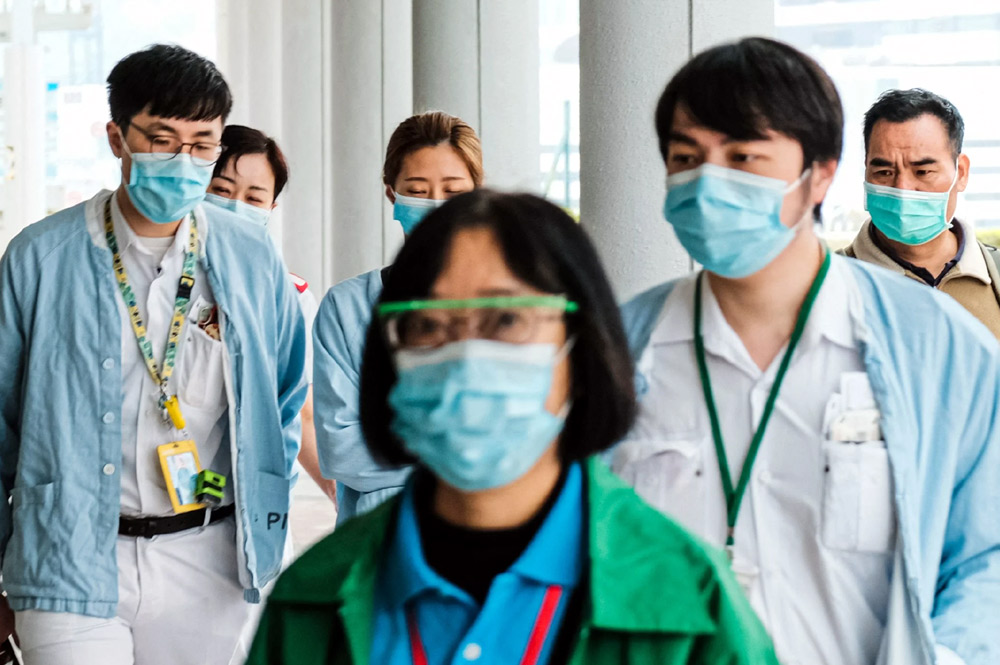
Severe acute respiratory syndrome coronavirus 2 (SARS-CoV-2) continues to spread internationally.
Worldwide, more than 1,200,000 cases of coronavirus disease have been detected and more than 65,000 deaths have been reported. COVID-19 is thought to have a higher death rate than seasonal influenza, even as the wide disparity is reported. Vaccine development and research into medical treatment for COVID-19 are underway, but are many months away.
Health workers are at the front mark of any outbreak response and as such are wide-open to hazards that put them at risk of infection with an epidemic pathogen (in this case COVID-19). Hazards include pathogen contact, long in work hours, psychological anguish, exhaustion, occupational stress, stigma, and physical and psychological violence. The burden on the global health care workforce continues to build up. This burden takes 2 forms. The first is the potentially devastating burden of illnesses that pressures health system capacity and the second is the effect on healthcare workers, including the danger of infection. Evidence related to transmissibility and death rate inform the medical community of the importance of attentiveness, research, active organization, and safety. There is limited obtainability of N95 masks, respiratory segregation rooms, and PAPR, particularly in outpatient offices, to viably evaluate every patient with respiratory illness and such measures are not routinely necessary. Protection is attainable even without N95masks or PAPR. Observance of CDC evidence-based guidelines for masks, hand hygiene, and environmental hygiene enhances the wellbeing for health care workers. Many additional queries and concerns remain, especially in high-risk sites and clinical locations. One problem is in the emergency units, where crowding is identified as a major distress. Precision in the use of recommended precautions for all patients with respiratory illness is particularly important. Firm adherence to guidelines is of high importance for the safety of health care workers. An attention on worker protection through specific preparation and encouragement of observance to barrier safeguards and hygiene sanctions may help provide a significant focus. Telling caregivers to emphasize on their safety and being clear and specific about how to do so can promote peace during an epidemic. Health care personnel must focus on thorough hand hygiene, avoiding infecting workspaces. Medical staff should clean workspaces and private items such as stethoscopes, mobile phones, keyboards, dictation devices, landlines, nametags, and other items with hospital-provided decontaminators or alcohol-based disinfectants. It is practical for environmental services workforces to increase the regularity of cleaning of frequently touched surfaces such as light switches, countertops, chair arms, escalator railings, elevator buttons, doorknobs, and handles. Active decontamination is not simply a technical issue, it also is comforting to stressed and worried caregivers, patients, and visitors. Recognizing that symptoms of COVID-19 may be mild, the improvement of pragmatic policies for health care workers who have respiratory illness should be considered. Because workforce safety is a main concern, active training in the proper use of barrier precautions and hygiene practices is vital. Many health care workers have disorders that elevate risk for severe infection or death if they become infected with COVID-19, so administrations will need to decide whether such workers, including physicians, should be diverted away from the highest risk sites.

While health care workers often accept increased risk of contamination, as part of their chosen occupation, they often show concern about family transmission, especially involving family members who are elderly, immunocompromised, or have prolonged medical conditions. Health care workers may ask whether their family members can receive priority for testing, vaccination, and treatment when the testing becomes available. Safeguarding care of health care workers’ family members would enhance workforce assurance and convenience. As the coronavirus continues to spread globally, some health-care professionals and experts have growing concerns about how the virus could excessively impact women. Women make up the majority of health-care workers worldwide. Roughly 70% of the worldwide health-care workforce is made up of women, according to a survey of 104 countries conducted by the World Health Organization. In the Hubei province of China, where the virus originated, more than 90% of health-care workers are women. In addition to women making up the majority of health-care workers in the U.S. and globally, women are overwhelmingly the primary caretakers in their families. This means that many women in health care are balancing a tough work life and home life.
Amidst the chaos caused by the Coronavirus outbreak, healthcare workers, are the real soldiers today. Every suitable healthcare member is trying to give their all and making people feel better and stronger. A firm salute to all the healthcare soldiers out there staying determined and showing strength, tackling everything each new day brings, and striving to satisfy all – patients, family, staff, and the media.
